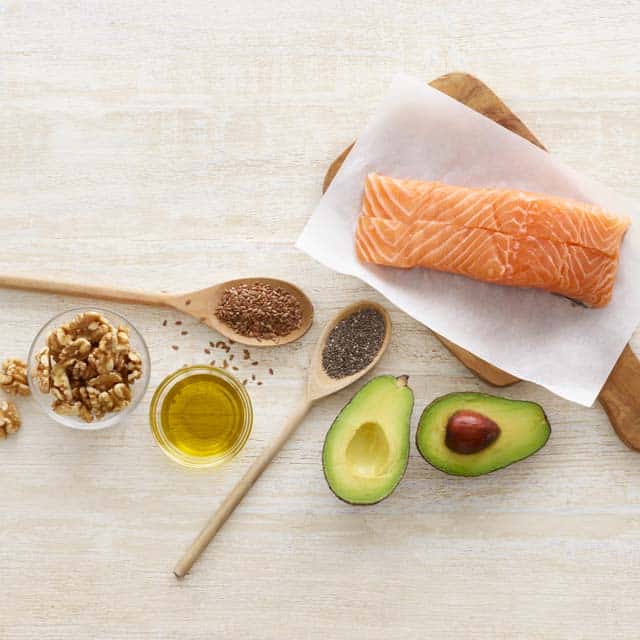Article by Dr. Josh Axe
You’ve read about the
keto diet,
what to expect when you’re eating keto and have your
keto shopping list—now you’re ready to start the keto diet.
Here are six great tips for keto diet success.
1. Start by doing a kitchen clear-out and overhaul
So that you’re not tempted to eat sugary foods and carbs that are off limits, get rid of anything you’ll be avoiding on the keto diet. (It’s understand-able that you may still need to keep some things at home for others you live with, but try to keep big temptations out of the house.)
Foods you’ll want to dispose of include: all sugary foods/desserts, sweetened drinks, grain/wheat products, foods made with corn and potatoes, sweetened dairy products, and ideally all processed foods made with synthetic ingredients or artificial sweeteners too.

2. Stock your kitchen with healthy fats & keto-approved foods
Head to Sprouts and seek out healthy fats/oils, quality proteins, lots of different veggies, as well as condiments and seasonings that will make keto meals taste great. (Check out the
Keto Diet Food List for a comprehensive list of what to stock in your kitchen when eating keto.)
How can you enhance the flavor of keto meals? Use all types of herbs/spices, real sea salt, olive oil, good quality butter, cocoa powder, vanilla extract, stevia extract, hot sauces and lemon juice.
3. Write out meal and snack ideas
Because the keto diet will likely be very different than the diet you previously ate, you’ll feel more prepared if you can meal-plan for the first couple weeks. Look for inspiration for
keto recipes online on keto-focused web-sites, Pinterest or in low-carb cookbooks/magazines. Create a plan to get you started, so you can stay on track.
In terms of keto-snacking, you may find that your appetite is suppressed and you’re not hungry between meals. But if you find yourself needing something to hold you over, try
keto snacks like deviled hard-boiled eggs, half an avocado, some nuts, bone broth, beef jerky or a keto smoothie.
4. Keep a food journal to help troubleshoot
Grab a journal or create a document on your computer where you can write out what you’re eating each day and how it’s making you feel. If you’re willing to test your ketone levels (by using urine strips, a blood test monitor or a breathalyzer) you can record how your meals are affecting your ketone levels, which gives you real-time feedback.
5. Finding that you’re not feeling satisfied after meals, overly hungry or just plain tired?
Try increasing the amount of fat you eat, and make sure you’re not drastically under-eating calories depending on your needs. You can also benefit from adding more veggies to your diet, since they are your best source of many essential nutrients like fiber and antioxidants, support digestion, lead to satiety and help reduce inflammation. Even though fats are king on the keto diet, keep eating several servings of veggies per day (a serving is about one cup).
6. Continue to practice self-care
Of course, the types of meals you eat are very important on the keto diet, but other lifestyle factors can also affect the results you’ll experience.
- Be sure to drink lots of water (check out the best keto drinks)
- Get plenty of sleep (important for regulating hunger hormones)
- Stay active in a gentle way such as by walking, doing yoga, leisurely biking, etc.
- Carve out time for relaxing and restorative activities such as reading, napping, exploring the outdoors, getting a massage, etc.
All of these can help to reduce any keto side effects you might encounter and will keep your energy level up, giving you the best chance of sticking with the diet.
Final Thoughts on Planning Keto Meals
To do the ketogenic diet correctly, so that you enter into nutritional
ketosis and start burning fat for energy, you’ll need to get roughly 75% or more of your daily calories from healthy-fat sources.
- About 20% of your daily calories should come from protein. Fat will be your primary source of your calories, not protein, so aim to eat smaller amounts of healthy protein sources throughout the day.
- Just about 5–10% of your calories will come from carbohydrates, mostly non-starchy vegetables.
- Overall, the goal is to keep your daily net carb intake—meaning the total grams of carbs you eat per day minus the grams of fiber you eat—to just 25–50 grams.
Dr. Josh Axe, DNM, DC, CNS, is a doctor of natural medicine, clinical nutritionist and author with a passion to help people get well using food as medicine. Author of the books
Eat Dirt, Essential Oils: Ancient Medicine and the upcoming
Keto Diet: Your 30-Day Plan to Lose Weight, Balance Hormones and Reserve Disease (February 2019), he also operates the number-one natural health website in the world at
DrAxe.com, with over 15 million unique visitors every month. He’s a co-founder of Ancient Nutrition, a health company where the mission is to restore health, strength and vitality by providing history’s healthiest whole food nutrients to the modern world.


 VIEW ALL
VIEW ALL



